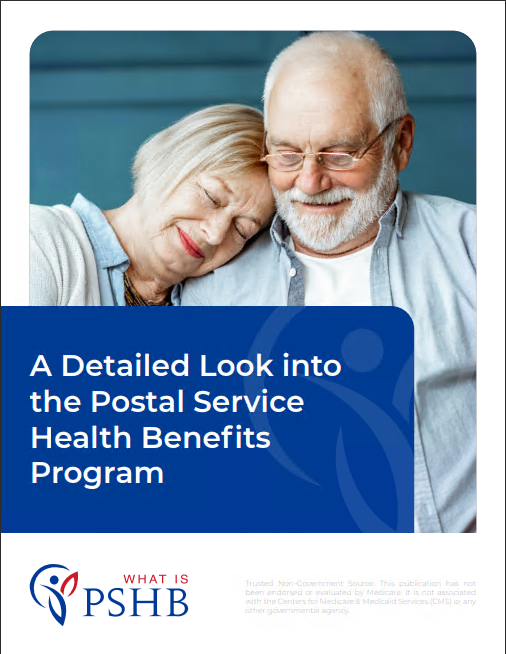Key Takeaways
-
Medicare Part C, also known as Medicare Advantage, is not a simple replacement for Original Medicare and comes with key differences in coverage, networks, and costs that USPS employees and retirees should understand before enrolling.
-
Not all Medicare Advantage plans are the same, and some may not coordinate well with the Postal Service Health Benefits (PSHB) program, making it crucial to review your options carefully.
Understanding Medicare Part C: It’s More Than Just Medicare
If you’re a United States Postal Service (USPS) retiree or employee approaching Medicare eligibility, you’ve probably heard about Medicare Part C, also known as Medicare Advantage. But what you might not know is that it’s not just an enhanced version of Medicare—it’s an entirely different type of plan with its own rules, coverage structures, and potential drawbacks.
Before signing up, you need to understand how Medicare Part C interacts with the Postal Service Health Benefits (PSHB) program, whether it fits your healthcare needs, and how costs compare to Original Medicare. Making an informed choice is essential to ensure you’re not caught off guard by unexpected coverage gaps or restrictions.
How Medicare Part C Works: The Basics You Need to Know
Medicare Advantage plans are offered by private insurance companies that contract with Medicare to provide your benefits. Unlike Original Medicare (Parts A and B), which is managed directly by the federal government, Medicare Part C operates through private insurers. Here’s what that means for you:
-
Bundled Coverage: Medicare Advantage plans combine hospital (Part A), medical (Part B), and often prescription drug (Part D) coverage into one plan.
-
Network Restrictions: These plans usually have provider networks, meaning you may need to see doctors and hospitals that are in-network.
-
Additional Benefits: Some plans offer extra perks like dental, vision, or hearing coverage, but these can vary widely between plans.
-
Cost Structure: Costs may include different premiums, deductibles, and copays than Original Medicare, and they can change annually.
-
Plan Types: Some plans require referrals to see specialists, while others offer more flexibility but at a higher cost.
What USPS Employees and Retirees Need to Consider Before Choosing Part C
While Medicare Advantage plans may sound appealing due to their added benefits, they come with trade-offs that USPS retirees and employees must evaluate carefully.
1. How It Works with PSHB
Starting in 2025, Postal Service retirees and their eligible family members must enroll in Medicare Part B to keep their PSHB coverage. However, Medicare Part C is not a requirement, and enrolling in it may affect how your benefits coordinate.
If you choose Medicare Advantage, you may need to drop PSHB coverage, depending on the plan rules. Some PSHB plans are designed to work alongside Original Medicare, potentially offering better cost-sharing and supplemental benefits. You should also consider whether a Medicare Advantage plan provides coverage that aligns with your specific medical needs.
2. Provider Network Limitations
Unlike Original Medicare, which allows you to see any doctor that accepts Medicare, Medicare Part C plans often have limited networks. If you travel frequently or live in different locations throughout the year, a network-based plan could limit your access to care.
-
HMO Plans: Require you to use a network of providers and often need referrals.
-
PPO Plans: Offer out-of-network coverage but at a higher cost.
-
Special Needs Plans (SNPs): Tailored for specific health conditions, but with limited provider availability.
3. Prior Authorizations and Restrictions
Medicare Advantage plans can require prior authorization for certain treatments, procedures, or medications. This means you may need approval from the plan before receiving care, which can lead to delays or denials of coverage. If you frequently need specialized care, this is an important consideration.
4. Changing Plans Isn’t Always Easy
Medicare Advantage enrollees are generally locked into their plan for the calendar year. If you become dissatisfied, you may have to wait until the next enrollment period to switch. Additionally, if you leave Medicare Advantage and want to return to a Medigap plan later, you may face medical underwriting, which could result in higher costs or denial of coverage. This is particularly important for those with chronic conditions who may need predictable healthcare costs.
5. Emergency and Out-of-Network Coverage
Emergency care is covered in all Medicare Advantage plans, but coverage for out-of-network providers can be limited. If you require specialized treatment that isn’t available in-network, you may have to pay more out of pocket. Some plans may also limit coverage for services received outside your home state.
Costs and Coverage: What You Might Pay with Medicare Part C
Medicare Advantage plans often market themselves as having low monthly premiums, but that’s not the full story. Here’s what you need to consider:
-
Premiums: You must still pay your Medicare Part B premium in addition to any Medicare Advantage plan costs.
-
Deductibles and Copays: Some plans have lower premiums but higher out-of-pocket costs when you receive care.
-
Maximum Out-of-Pocket (MOOP) Limits: Medicare Advantage plans set annual caps on how much you pay for covered services, but these limits can be high compared to Original Medicare combined with a PSHB plan.
-
Prescription Costs: Many plans include drug coverage, but formulary changes can affect out-of-pocket expenses.
When Medicare Part C Might Be a Good Option
There are scenarios where enrolling in a Medicare Advantage plan could make sense for a USPS retiree, such as:
-
You prefer a single plan that includes hospital, medical, and drug coverage.
-
Your preferred doctors and hospitals are in-network.
-
You are comfortable with plan rules such as prior authorizations.
-
You want additional benefits like dental or vision that aren’t covered by Original Medicare.
-
You don’t travel frequently and don’t need broad provider access.
However, you must compare these benefits to what you’d receive with PSHB plus Original Medicare.
Alternatives to Medicare Part C for USPS Retirees
If Medicare Advantage doesn’t seem like the right fit, you have other options:
-
Original Medicare + PSHB: Many PSHB plans work seamlessly with Original Medicare and can cover extra costs like deductibles and copays.
-
Medigap Plans: These supplemental policies help cover out-of-pocket costs in Original Medicare, though they come with an additional premium.
-
Stand-Alone Part D Plans: If you need prescription drug coverage, you can enroll in a separate Medicare Part D plan instead of Medicare Advantage.
-
FEHB/PSHB Coordination: If you already have PSHB, review how it integrates with Medicare before making a switch.
What’s the Right Choice for You?
Ultimately, deciding whether to enroll in Medicare Part C depends on your healthcare needs, financial situation, and whether the plan aligns with your existing USPS benefits. Take the time to compare all your options carefully.
For personalized advice on choosing the best Medicare plan for your situation, get in touch with a licensed agent listed on this website.






